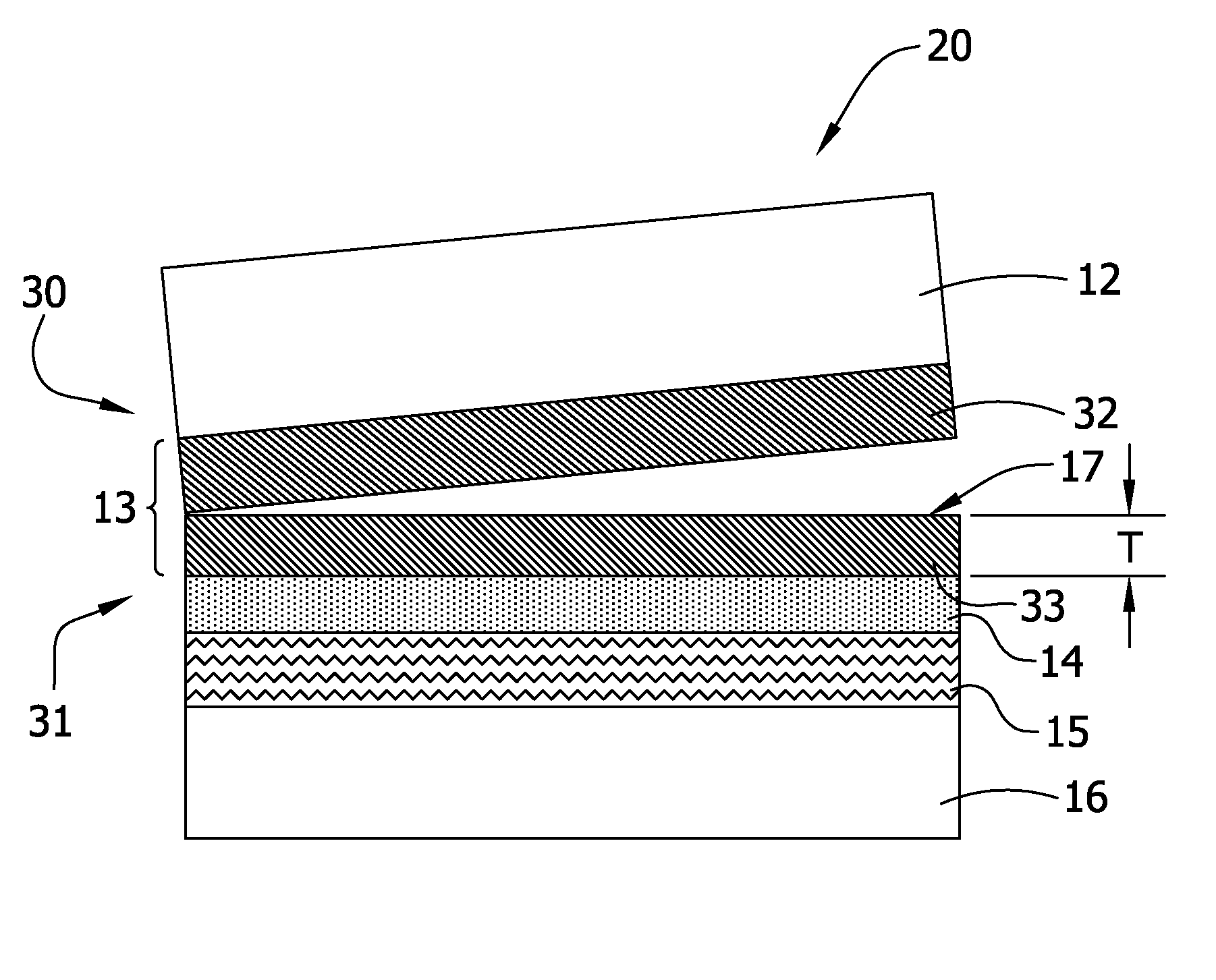Method for the manufacture of a strained silicon-on-insulator structure
a technology of strained silicon and on-insulator, which is applied in the direction of basic electric elements, electrical apparatus, and semiconductor devices, can solve the problems of inconvenient production of fully-depleted strained-semiconductor-on-insulator devices, inconvenient structure, and difficult to achieve the thickness required for fully-depleted silicon-on-insulator device fabrication
- Summary
- Abstract
- Description
- Claims
- Application Information
AI Technical Summary
Benefits of technology
Problems solved by technology
Method used
Image
Examples
example
[0058] A crude SOI structure was prepared using common techniques in the art, such that, after separation, the resulting structure comprised the handle wafer, the SiO2 layer, the strained silicon layer thereon, and a residual relaxed SiGe layer on the strained silicon layer, the residual relaxed layer having a thickness of 120 nm. This structure was then exposed to NH4OH:H2O2:H2O etchant having a ratio of 1:2:50 for 240 min at about 65° C., while a megasonic treatment of about 1500 W was applied, in order to substantially remove the residual relaxed layer from the surface of the strained layer.
[0059] The resulting strained silicon surface was evaluated for RMS roughness, residual Ge concentration, and LPD concentration. The silicon surface showed an RMS roughness of about 0.8 nm using a 30 μm×30 μm field of view. Further, the residual Ge concentration was measured to be about 1.0×1010 Ge atoms / cm2. Finally, the LPD concentration was detected to be about 0.35 LPDs / cm2, while the dia...
PUM
 Login to View More
Login to View More Abstract
Description
Claims
Application Information
 Login to View More
Login to View More - R&D
- Intellectual Property
- Life Sciences
- Materials
- Tech Scout
- Unparalleled Data Quality
- Higher Quality Content
- 60% Fewer Hallucinations
Browse by: Latest US Patents, China's latest patents, Technical Efficacy Thesaurus, Application Domain, Technology Topic, Popular Technical Reports.
© 2025 PatSnap. All rights reserved.Legal|Privacy policy|Modern Slavery Act Transparency Statement|Sitemap|About US| Contact US: help@patsnap.com



